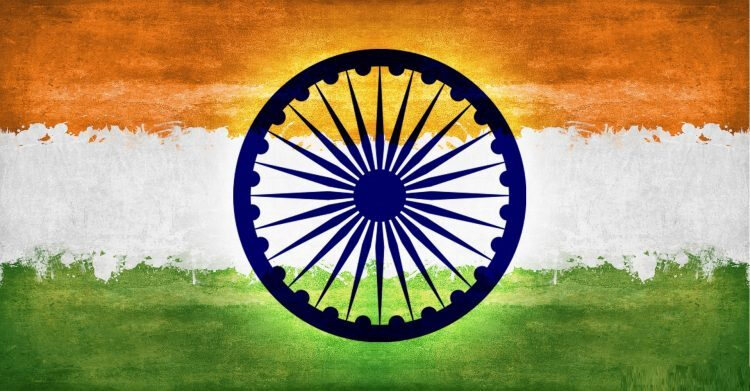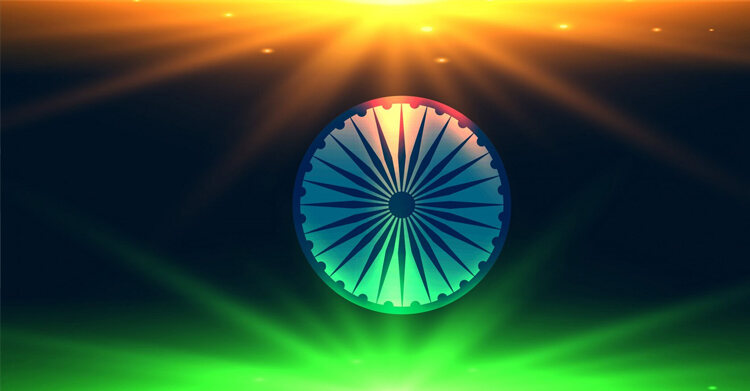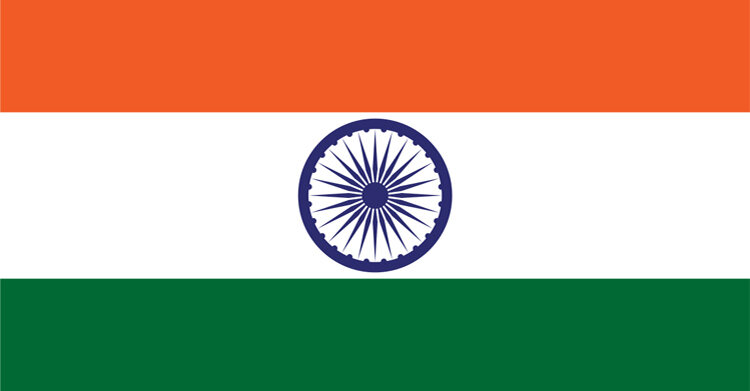Table of Contents
The national flag of India, informally called Tiranga, is a horizontal rectangular tricolour flag . The national flag of India, also known as the Tricolour, consists of three equal horizontal bands of saffron, white, and green. In the center of the white band is a navy blue wheel with 24 spokes, known as the Ashoka Chakra. The national symbols of India, the Ashoka Chakra, embodies eternal truth and the national flag represents unity, courage, and the diversity of the nation.
The Indian tricolour is one of the most respected and recognized symbols of India around the world, and it is a proud symbol of the Indian nation’s struggle for freedom and independence from British colonial rule. It is hoisted on important national holidays, government buildings, educational institutions, and during significant events and ceremonies as a symbol of national pride and unity.

Significance of Indian Flag
The national flag of India is a symbol of national pride, unity, and sovereignty. It represents the rich cultural heritage and diversity of India and serves as a reminder of the country’s struggle for freedom and independence.
The three colours of the flag have symbolic meanings – saffron represents courage and sacrifice, white represents purity and truth, and green represents faith and fertility.
The national flag of India is a unifying force that brings together people of diverse cultures, religions, and regions. It reminds all Indians of their common identity as citizens of a free and democratic country and serves as a source of inspiration and pride.
The national flag is considered sacred and is to be treated with utmost respect and dignity. It is hoisted on important national occasions such as Independence Day, Republic Day, and Gandhi Jayanti, and is also flown on government buildings, schools, and other public places.
What Does The 3 Colours Of The Flag Mean ?
Here we will learn about the meanings of the colours of the national flag. The colours have significant meanings.
The saffron colour represents courage and sacrifice, white represents purity and truth, and green represents faith and fertility. The Ashoka Chakra represents the ancient Indian Emperor Ashoka and his ideals of righteousness, truth, and nonviolence.
Let’s learn more about the meaning of colours in detail.
1) Saffron is one of the three colours in the national flag of India and represents courage and sacrifice.
The saffron colour in the flag is derived from the saffron colour of the Hindu renunciation, Symbolising, selflessness and patriotism.
The saffron colour is also associated with the sun and fire and is considered a symbol of energy and purity. Overall, the use of saffron in the Indian flag represents the country’s spirit of sacrifice, courage, and patriotism, and serves as a proud symbol of India’s rich cultural heritage and diversity.
2) The green colour also symbolises India’s agriculture and economic prosperity, as agriculture is a major contributor to India’s economy. Overall, the use of green in the Indian flag represents the country’s bond with nature, its diversity, and its quest for growth and prosperity. It serves as a proud symbol of India’s rich cultural heritage, unity, and harmony.
3) The white colour in the flag is associated with Gandhi’s philosophy of satyagraha or truth force, which was a non-violent method of resisting British colonial rule. It also represents India’s quest for peace, harmony, and unity. The white colour in the flag also symbolises the snow-clad Himalayas and other mountain ranges of India, as well as the country’s vast coastline and oceans.
4) The Ashoka Chakra in the centre of the flag symbolises the wheel of law, as preached by the Buddha, and represents the dharma or righteousness. The 24 spokes in the Chakra represent the 24 virtues of Buddhism.
About National flag of India
The national flag of India, also known as the Tricolour, consists of three equal horizontal bands of saffron, white, and green. In the centre of the white band is a navy blue wheel with 24 spokes, known as the Ashoka Chakra. The saffron colour represents courage and sacrifice, white represents purity and truth, and green represents faith and fertility. The Ashoka Chakra represents the ancient Indian Emperor Ashoka and his ideals of righteousness, truth, and nonviolence. The flag was adopted on July 22, 1947, and is hoisted on important national occasions such as Independence Day, Republic Day, and Gandhi Jayanti.
Who designed Indian Flag
The national flag of India was designed by Pingali Venkayya, an Indian freedom fighter, who presented his idea to Mahatma Gandhi in 1921. However, the final design of the flag was modified by a committee of the Constituent Assembly headed by Rajendra Prasad, and officially adopted on July 22, 1947.
Features Of National Flag Of India
The Indian Tricolour or the national flag of India is a rectangular flag with three equal horizontal bands of saffron, white, and green. The saffron colour represents courage and sacrifice, white represents purity and truth, and green represents faith and fertility. In the centre of the white band is a navy blue wheel with 24 spokes known as the Ashoka Chakra, which represents the ancient Indian Emperor Ashoka and his ideals of righteousness, truth, and nonviolence. The Indian tricolour is one of the most respected and recognized symbols of India around the world, and it is a proud symbol of the Indian nation’s struggle for freedom and independence from British colonial rule. It is hoisted on important national occasions such as Independence Day, Republic Day, and Gandhi Jayanti to signify the country’s rich cultural heritage and national pride. The flag was adopted on July 22, 1947, and is hoisted on important national occasions such as Independence Day, Republic Day, and Gandhi Jayanti.
Spokes In Ashoka Chakra

The Ashoka Chakra, which is in the centre of the national flag of India, has 24 spokes or rays. These spokes are evenly spaced and are designed to look like a wheel or a disc. The Ashoka Chakra was adopted as a symbol of the Indian republic in 1950 and is named after the ancient Indian emperor Ashoka, who ruled over India in the 3rd century BCE. The 24 spokes in the Chakra represent the 24 virtues of Buddhism, which are essential for the attainment of nirvana or enlightenment. These virtues are: love, courage, patience, peace, magnanimity, kindness, truthfulness, gentleness, selflessness, self-restraint, righteousness, cleanliness, contentment, determination, gratitude, humility, perseverance, forgiveness, fortitude, tolerance, discernment, generosity, compassion, and non-violence.
Images of National Flag of India

Indian National Flag Adoption Day
July 22nd is celebrated as National Flag Adoption Day or Tiranga Adoptsav in India to commemorate the day when the Indian National Flag was adopted by the Constituent Assembly of India in 1947. On this day, several programs are organised across the country to pay tribute to the freedom fighters who sacrificed their lives for the freedom struggle and to honour the national flag as a symbol of national pride and unity. Schools, colleges, government offices, and other institutions across India hoist the national flag and organise cultural programs, parades, and other activities to celebrate National Flag Adoption Day.
The day is observed as a public holiday in India to mark the significance of the adoption of the national flag and its historical importance in India’s journey towards independence and sovereignty.
Indian flag with army
The Indian national flag, when displayed with the Indian army, is a symbol of unity, integrity, and the collective strength of the nation.
When used in conjunction with the armed forces, the flag may be accompanied by military regalia, emblems, or displayed during official ceremonies to honour and represent the country’s defence forces. The flag serves as a proud symbol of the nation’s commitment to its citizens’ safety and security.
Disrespecting a national flag is considered a serious matter and is often subject to legal consequences.
| Essay on Indian Flag | Speech on National Flag |
| Facts about India’s National Flag | Slogans on National Flag of India |
| Indian National Flag Adoption Day | Har Ghar Tiranga Slogan |
FAQ’s on Indian National Flag
What is the importance of the flag?
Flags hold significant cultural, national, or symbolic importance for countries. They represent identity, unity, and often embody historical or cultural values. They serve as a visual symbol of a nation's pride, history, and aspirations.
Why does the Ashoka Chakra have 24 lines?
The Ashoka Chakra on the Indian flag comprises 24 spokes to represent the 24 hours of the day, symbolizing that life should move forward and remain dynamic without any stagnation.
Who created the Indian flag?
The design of the Indian flag was conceptualized by Pingali Venkayya, an Indian freedom fighter and educator, and was later adopted by the Constituent Assembly of India on July 22, 1947.
Why do the Ashoka Chakra have 24 lines?
The 24 lines in the Ashoka Chakra represent the eternal movement of time and the continuous progress and dynamism of life, echoing the principle that life should always evolve and move forward.
Why is our national flag called Tiranga?
The Indian national flag is called Tiranga because Tiranga translates to tricolor in English, referring to the flag's characteristic three colors: saffron at the top, white in the middle, and green at the bottom, with the Ashoka Chakra in navy blue at the center.
What are the 17 national symbols of India?
India officially recognizes several national symbols, including the National Flag, National Emblem (Lion Capital of Ashoka), National Anthem (Jana Gana Mana), National Song (Vande Mataram), National Animal (Bengal Tiger), National Bird (Indian Peafowl), and others. However, there are more than 17 such symbols, each representing different aspects of the nation's heritage, culture, and natural resources.
What is the national flag of India name?
The national flag of India consists of three horizontal stripes - saffron at the top, white in the middle, and green at the bottom. There is a navy blue Ashoka Chakra with 24 spokes in the center of the white stripe. The colors and the Chakra symbolize various aspects of India's heritage, values, and aspirations.









